Trees play a crucial role in our ecosystem, yet they are vulnerable to a number of issues, including sunscalding on trees.
By understanding sunscald, its symptoms, causes, and treatment, we can better protect our green friends and maintain a healthy environment.
Preventive strategies like tree wrapping and planting during cooler temperatures can help reduce the risk of sunscald in trees.
What we cover
ToggleIdentifying sunscald on trees
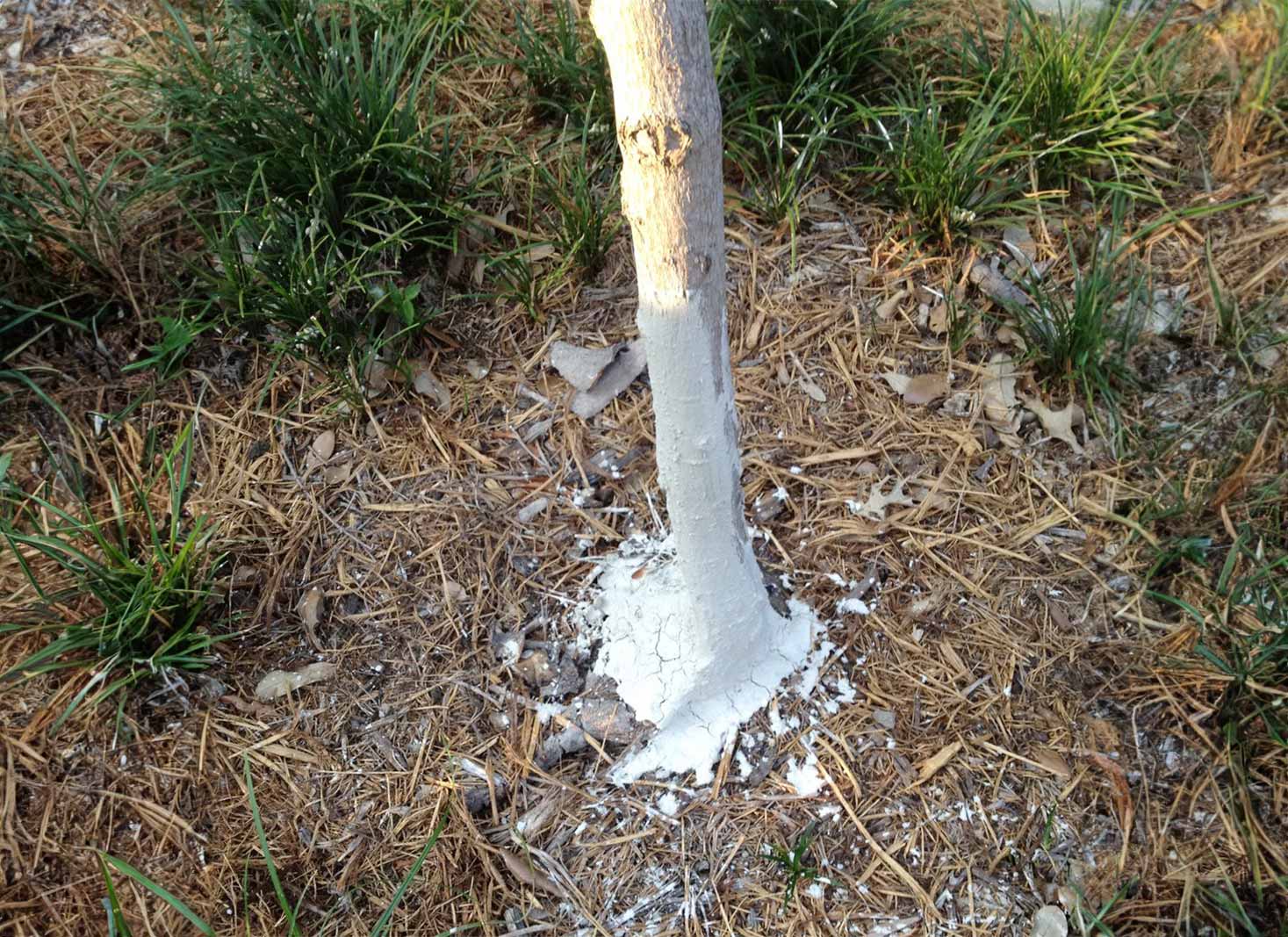
Sunscald on trees is a common issue, especially for young trees, fruit trees, and recently planted trees with thin bark.
This condition is characterized by discolored bark, cracked1, and peeling bark, often occurring on the south or southwest side of the tree trunk.
The primary causes of sunscald are extreme temperature fluctuations and excessive sunlight exposure.
If left untreated, sunscald can weaken the tree and make it more susceptible to insect or disease infestations.
Summer vs. winter sunscald
Sunscald can occur in both summer and winter, but its causes and effects differ between seasons. Summer sunscald is caused by intense heat on thin bark or over-pruning, leading to damage to the bark tissue.
In contrast, winter sunscald results from rapid freeze/thaw cycles on young trees with thin bark and new growth stems.
This rapid change in temperature leads to frost cracks, as the bark’s cambium layer experiences extreme temperature differences.
In both cases, sunscald can cause long-term damage to the tree if not properly addressed. It’s crucial to understand the difference between summer and winter sunscalds to implement the right prevention and treatment methods.
Trees most affected by sunscald
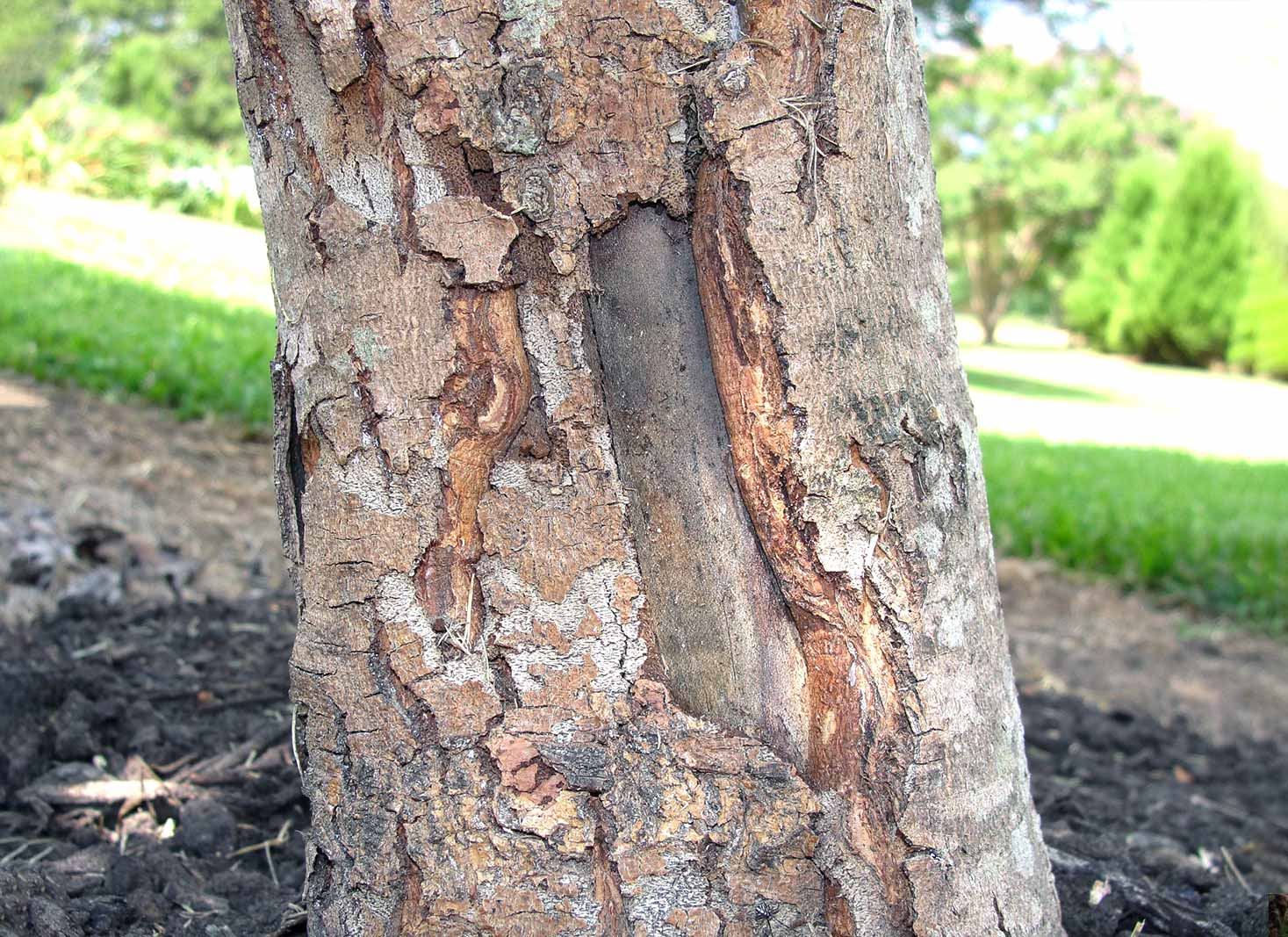
Thin-barked trees that are vulnerable to sunscald include:
- Fruit trees with thinner bark
- Honey locusts
- Ashes
- Oaks
- Maples
- Lindens
- Willows
These deciduous trees are susceptible to extreme temperature fluctuations when exposed to direct sunlight, which can cause sunscald injury.
Summer sunscald is more commonly observed in fruit and ornamental trees, such as maples, sweetgum, linden, ash, honeylocust, Eastern white pine, and apples.
It’s essential to be aware of the tree species in your area and their susceptibility to sunscald.
By identifying the trees most at risk, you can take appropriate measures to protect them from sunscald damage and maintain a healthy environment.
Factors contributing to sunscald
There are several factors that can contribute or increase the risk of sunscald2 in trees. They include:
- Over-pruning, which can leave the tree more vulnerable to sunlight exposure
- Sudden exposure to sunlight, especially for evergreen trees that have been in the shade for an extended period
- Transplanting saplings, such as deciduous trees, to full sun environments without allowing them to acclimate to the new environment
Understanding these contributing factors is essential for preventing sunscald in trees. By taking the appropriate measures, we can ensure that our trees remain healthy and strong, able to withstand the challenges that sunscald presents.
Long-term effects of sunscald
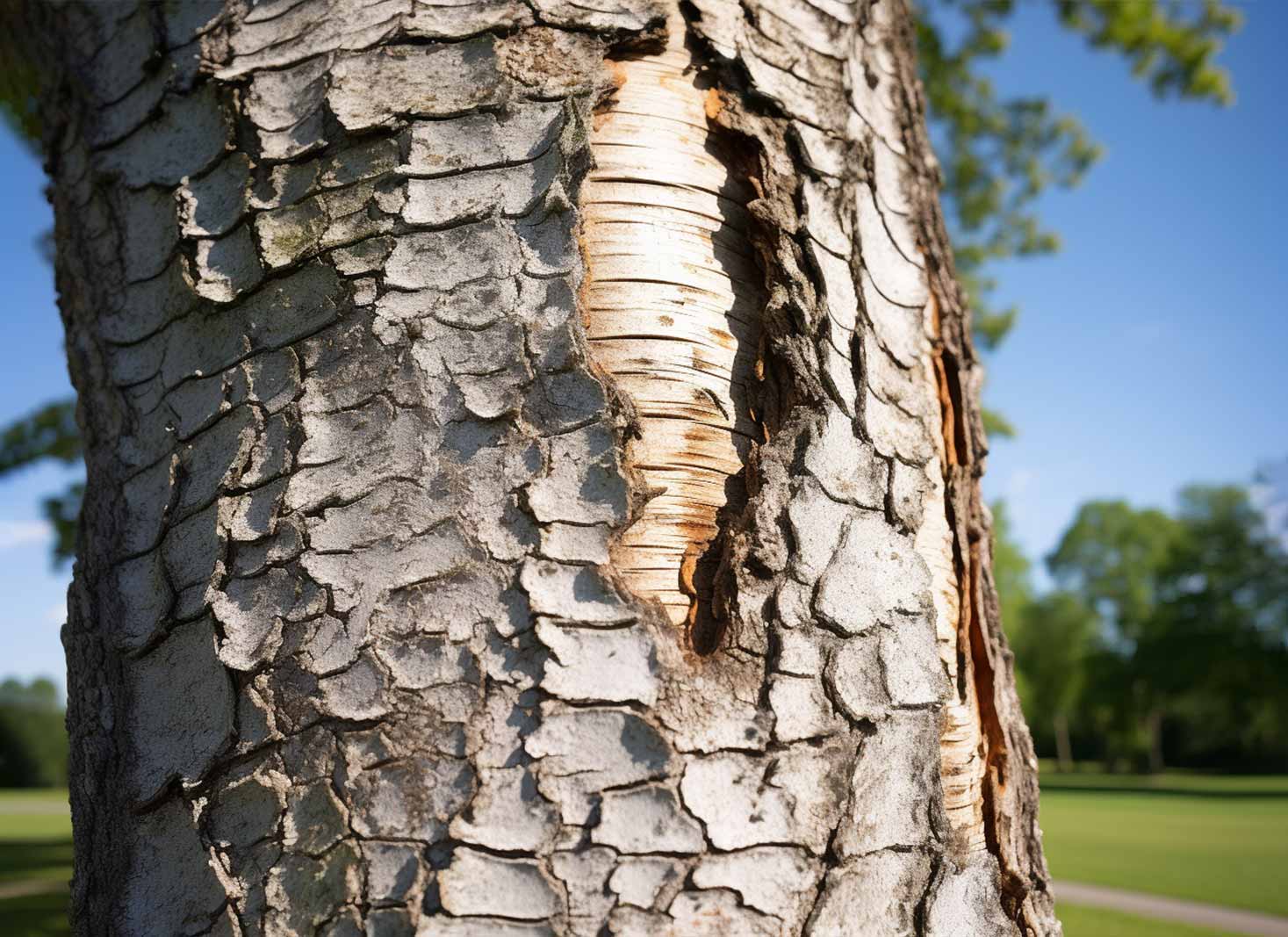
The long-term effects of sunscald can be detrimental to a tree’s health. Some potential consequences of sunscald include:
- Cosmetic damage
- Weakened tree structure
- Increased susceptibility to fungal diseases
- Attraction of disease-carrying insects
Sunscald can also affect the tree’s bark, delaying the process by which bark thickens and becomes more resistant to damage.
In some cases, sunscald damage can result in chronic disease and even tree death, especially in young trees, which are more vulnerable than mature ones.
By recognizing the long-term effects of sunscald, we can take action to treat affected trees and implement prevention strategies to avoid further damage.
Preventing sunscald in trees
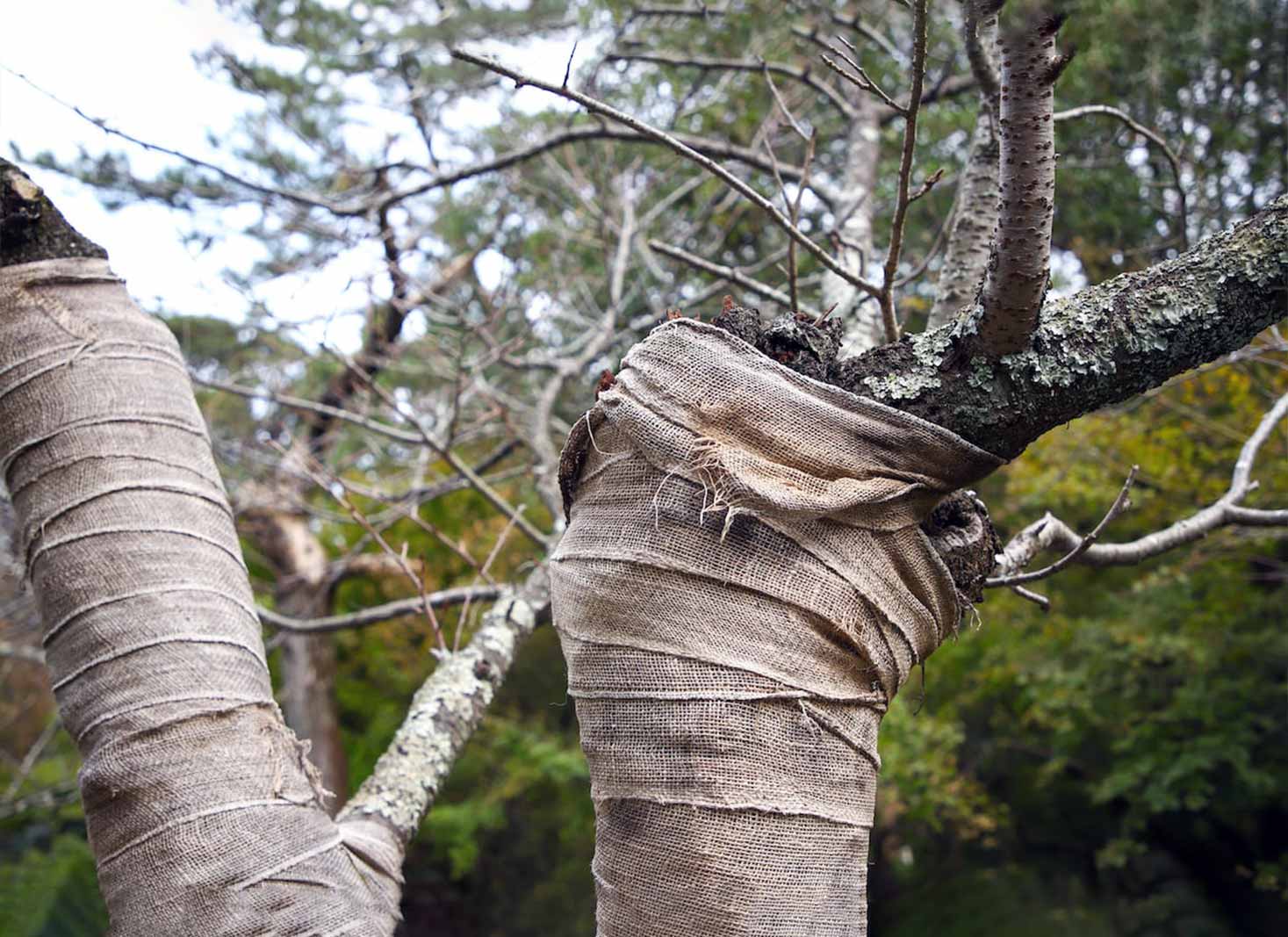
Preventing sunscald involves a combination of proper tree wrapping, planting during cooler temperatures, and avoiding over-pruning.
Tree wrapping is beneficial in protecting the trunk from direct sunlight and heat, thus helping to prevent sunscald.
Planting during cooler temperatures can help reduce the risk of sunscald, as the tree will be exposed to less direct sunlight and heat.
Additionally, proper pruning practices should be followed to avoid excessive removal of foliage, which can inhibit the tree’s capacity for photosynthesis and potentially result in sunscald.
Tree wrapping techniques
Tree wrapping techniques involve using light-colored, loose-fitting materials, such as Kraft paper or white plastic tree guards, to insulate and reflect sunlight while allowing airflow.
Late October or early November is the ideal time to apply tree wrap. Here’s how to do it:
- Begin wrapping near the base of the trunk and proceed upwards until just above the lowest branches.
- Make sure the wrap is loose enough to allow for growth but tight enough to stay in place.
- Secure the wrap with tape or string, making sure not to wrap it too tightly.
- It’s essential to remove the tree wrap and tape the following April to prevent girdling and potential insect damage.
By using proper tree wrapping techniques, we can protect tree trunks from extreme temperatures and sunlight exposure, thus preventing sunscald injury and maintaining healthy trees.
Planting and pruning considerations
Planting trees during the dormant season, such as autumn, is an effective solution to prevent sunscald.
By planting during cooler temperatures, the tree will be exposed to less direct sunlight and heat, reducing the risk of sunscald damage.
When it comes to pruning, it’s crucial to be cautious and avoid over-pruning to prevent sunscald.
Ensure not to remove too much of the tree top in any single year, as this can inhibit the tree’s capacity for photosynthesis and potentially result in sunscald.
Treating sunscald-affected trees
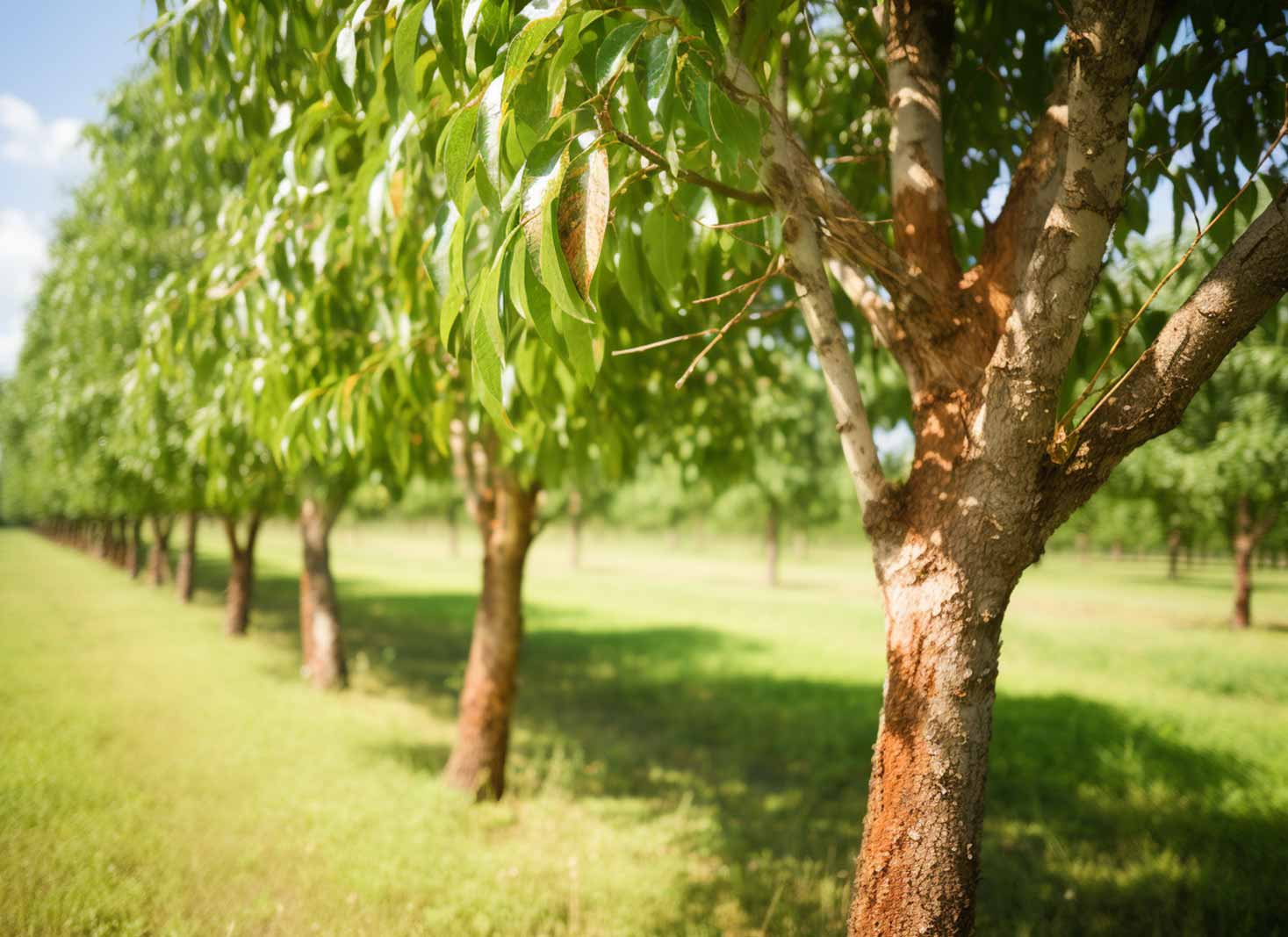
If a tree is affected by sunscald, it is crucial to provide proper care and treatment to promote recovery and prevent further damage. Begin by removing the dead bark and cutting it away until the live layers are reached.
Next, ensure the tree receives adequate irrigation and compost, especially during hot and dry summer months, to help the tree trunk recover from sunscald damage.
To prevent further sunscald injury, implement prevention strategies such as wrapping the tree until it has grown larger and applying white paint specifically designed for this purpose to exposed trunk and limbs.
FAQ's
Sunscald can cause reduced growth and slow tree establishment, but trees may be able to recover by forming callus tissue which slowly grows over the affected area.
However, this healing process is not always successful and may lead to the decline of the tree.
Sunscald is the damage caused to bark, leaves, and even fruit on a tree due to excessive exposure to sunlight in the winter season, resulting in permanent visible damage.
Sunscald can be prevented by providing shade to the tree, such as wrapping it in burlap or using a tree wrap. Pruning the tree to reduce the amount of exposed bark can also help. Additionally, applying white paint or white wrap is a good idea.
Sunscald is easily preventable, but unfortunately cannot be cured once the damage is done. The best way to deal with sunscald is to support the plant and wait for it to regrow healthy leaves.
Whitewashing tree trunks with a mixture of interior latex paint and water helps to protect against sunburn. Diluted paint should be applied to young trees and newly exposed bark for best protection.
Sunscald is a condition characterized by cracked and peeling bark on trees, caused by extreme temperature fluctuations and excessive sunlight exposure.
It is most common in young trees but can affect trees of any age. Sunscald can be prevented by providing shade for the tree, especially during the hottest parts of the day. Additionally, applying a protective coating.
- University Of Connecticut, (2017) Frost Cracks and Sunscald on Trees. <https://homegarden.cahnr.uconn.edu/factsheets/frost-cracks-and-sunscald-on-trees/> Accessed: 20-03-2024.
- Backyard Gardner, (2021) Sunscald and Tree Health <https://www.cales.arizona.edu/yavapai/anr/hort/byg/archive/sunscald2021.html> Accessed: 20-03-2024.




